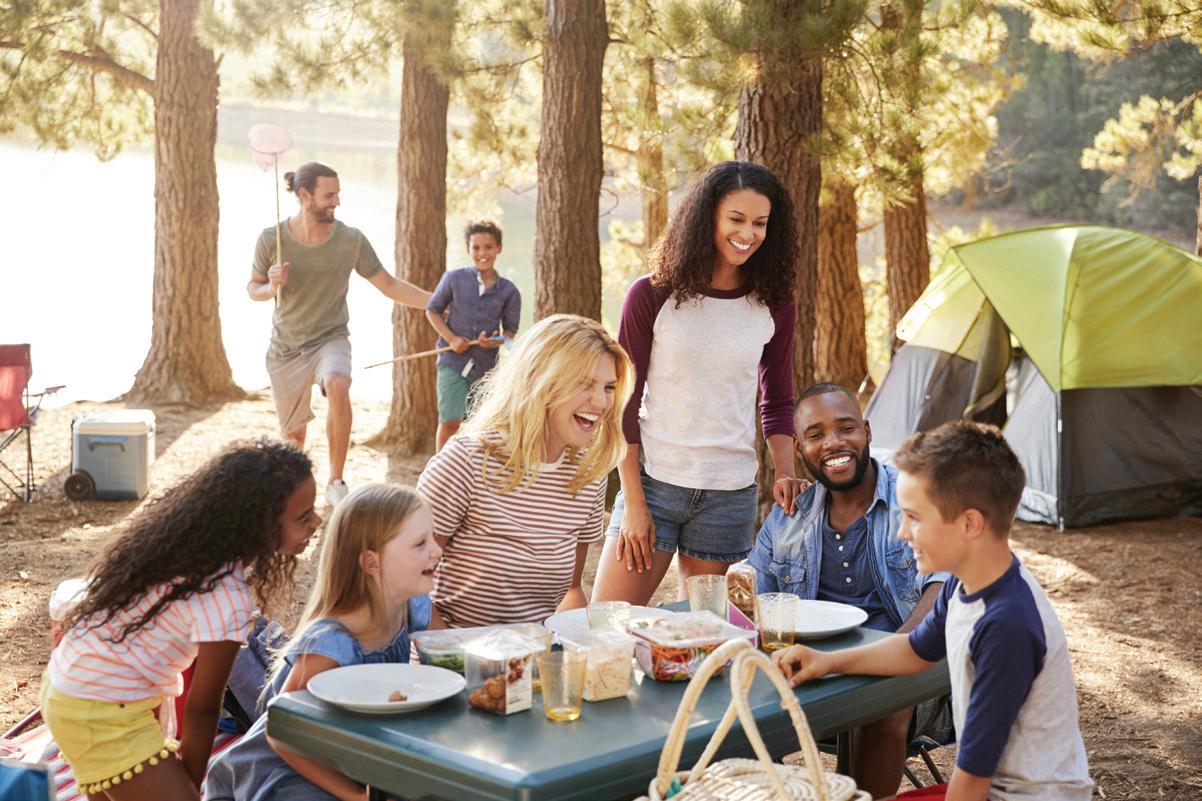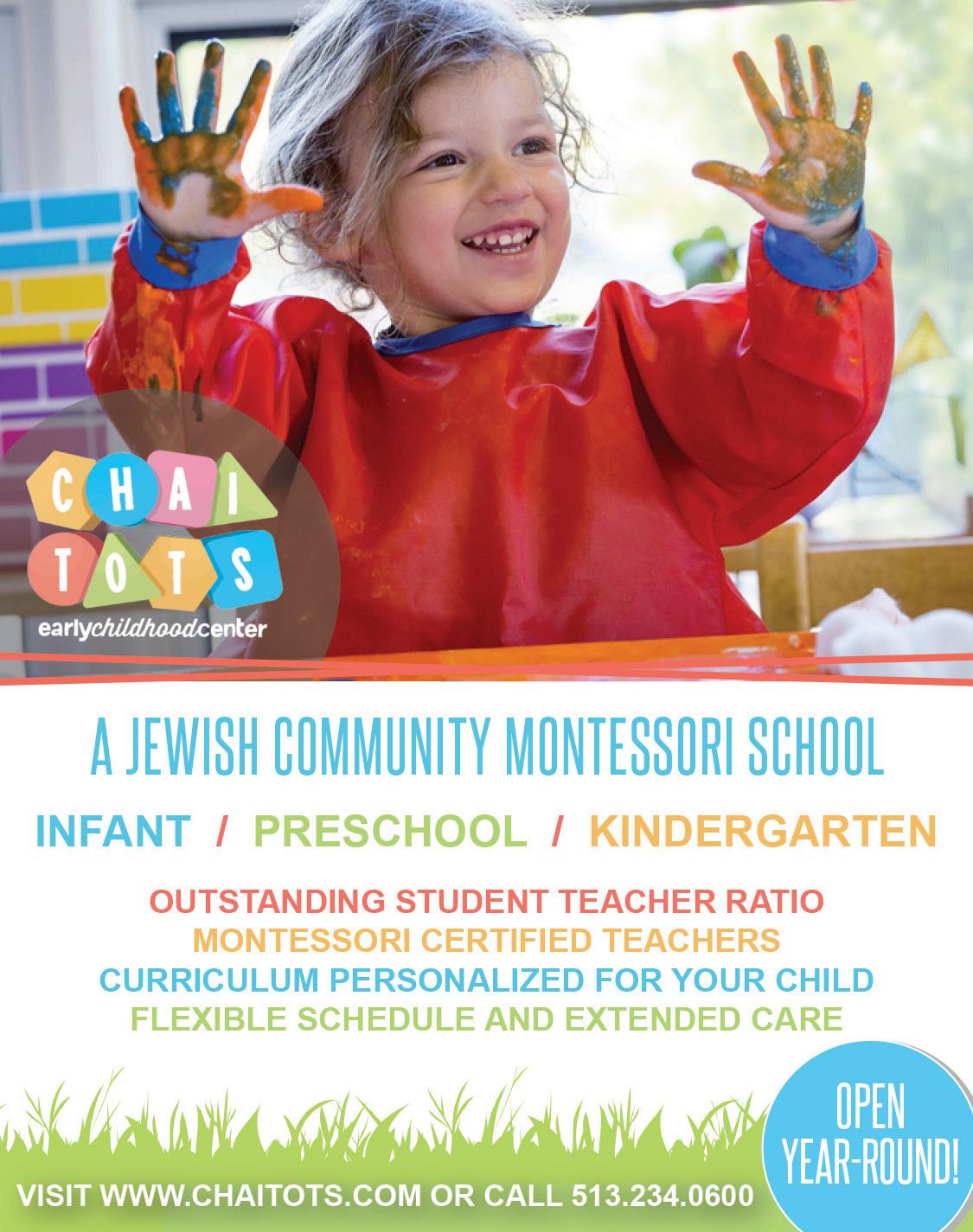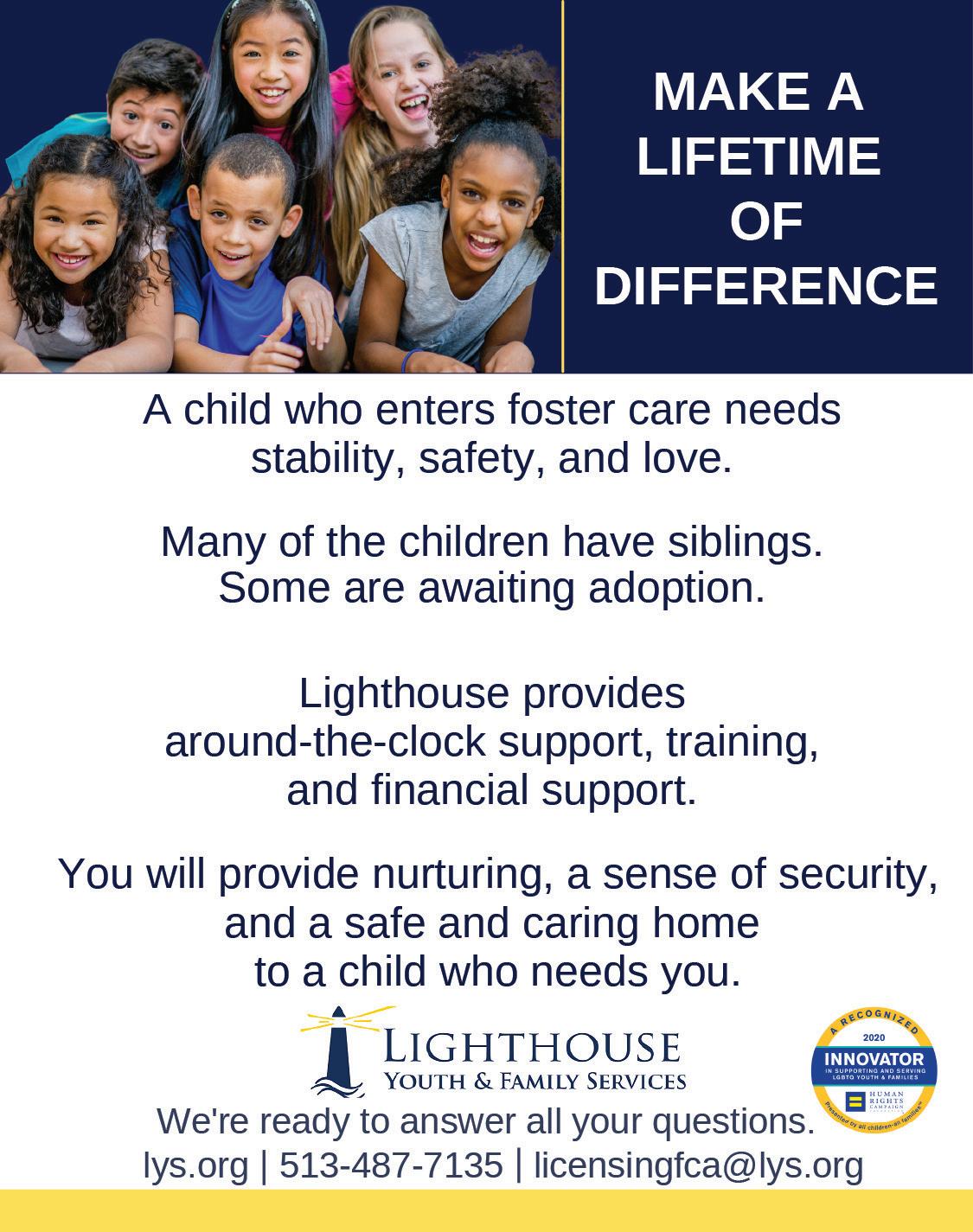
7 minute read
Let's Camp
Five campgrounds with something for everyone.
Fresh air, wide-open spaces to run, marshmallows melting over an open fire and freedom from those mind-numbing electronic devices — these are just a few things to love about camping. Camping puts us back in touch with nature and offers the perfect opportunity to reconnect as a family. Thankfully, there are plenty of family-friendly campgrounds just a short drive away.
The scenic getaway: Hocking Hills State Park
19852 OH-664, Logan, OH The campground at Hocking Hills has been named No. 1 in the U.S. by Trailblazer.com — and for good reason. Towering cliffs, waterfalls and deep, hemlock-shaded gorges serve as the backdrop for this campground that is packed with family-friendly amenities. Accommodations ranging from to camper cabins to primitive campsites make this the perfect spot for both beginner and seasoned campers.
The aquatic playground: Brookville Lake
3056 Quakertown Ramp Rd., Liberty, IN Brookville Lake lies in the historic east fork of the Whitewater River Valley and is home to traces of prehistoric Native American mounds and 450-million-year-old fossils. If ancient relics are not your cup of tea, no worries. The park is also home to two State Recreation Areas: Mounds SRA and Quakertown SRA, boasting more than 25 miles of hiking trails and wide-open waterways for boating and nationally recognized recreational and sport fishing. Two beaches and more than 400 campsites round out the family-friendly fun.

The hiker’s paradise: Charlestown State Park
12500 Indiana 62, Charlestown, IN
Overlooking Fourteen Mile Creek Valley and the Ohio River, this relatively new state park boasts trails with rugged hills, deep ravines and elevation changes of over 200 feet (a rarity in Indiana). Highlights include Devonian fossil outcrops and stunning sinkholes. Bird watchers will enjoy the 72 species of birds, including an occasional bald eagle. Campers can also take a walk across the historic Portersville Bridge that was restored and relocated to Charlestown State Park in 2011.
The active family getaway: Hocking Hills KOA
29150 Pattor Rd., Logan, OH Those looking for a camping experience with modern-day amenities will find what they are after at Hocking Hills KOA. This campground runs the gamut from RV sites with patios to traditional campsites. Activities range from a heated swimming pool to a gem mine. Amenities like on-site ice cream and pizza shops and an activity room offer the comforts of a resort while maintaining the feel of the great outdoors. Even Fido can get in on the fun at the on-site dog park.
The history lover’s dream: Big Bone Lick State Park
3380 Beaver Rd., Union, KY
Take a step back in time at this 813-acre park. A visitor’s center/ museum features paleontological and archaeological exhibits that tell the rich history of the land. The highlight is the herd of bison that calls the park home (and, coincidentally, is found on Bison Trail). The on-site campground offers 62 campsites with utility hookups, grills, swimming pool and playground areas, making it ideal for family camping.







G E T T I N G S T A R T E D I N F O S T E R C A R E


The road to foster care might seem long and intimidating, but here’s a map to help navigate your way through.

WORDS BY RACHAEL DUPREE
On any given day, 16,000 children in Ohio enter the foster care system, needing a safe and loving home where they can grow and thrive. Foster care offers temporary care — as little as a couple months and as long as a few years — for children whose biological parents are unable to do so. While many families who foster also choose to open their homes for adoption, the ultimate goal of foster care is to reunite children with their parents.
Foster families don’t have to look a certain way — you don’t have to be rich or married or even have children of your own. If you have considered fostering but aren’t sure you have what it takes, it’s a path worth exploring, as it can have a lasting impact on a child’s life.
Getting Started
The first step on your fostering journey is choosing a foster care agency to work with.The agency will walk you through the licensing process, which differs from state to state, and support you once a child is placed in your home. Most agencies offer information sessions where you can learn more about fostering needs, as well as the agency itself.
“Comfortability is a huge factor in this,” says Phil Hoffheimer, lead foster parent recruiter for Specialized Alternatives for Families & Youth (SAFY), a fostering and adoption agency that operates in Ohio. “If you find yourself unable to have uncomfortable conversations with an agency, then things will only get more complicated in the future.”
When checking out prospective agencies, consider if they are publicly or privately operated, what services and supports they provide, the office’s proximity to your home, and any costs related to licensing. Once you’ve selected an agency, you can begin the steps to becoming a licensed foster care provider, including completing pre-service training and a home study.
Ohio requires at least 24 hours of preservice training, though more may be required depending on the agency you work with and the type of licensure you’re seeking. You’ll be introduced to things like the child welfare system, how to set up your home, the child’s support team, principles of trauma-informed care and behaviors to expect in foster children. This initial training is followed up with at least 30 hours of ongoing training every two years for recertification.
The home study is an extensive report that usually takes about three to six months to complete and provides a broad overview of your life so that a child can be matched to your home. A case worker will interview you, your family and others, and will include information about your relationships and social life, the neighborhood you live in, your financial status, daily routines, parenting experience, and why you want to foster. It will also include a medical assessment, background checks and references.
Do I Have What It Takes?

A lot of emotions can be tied up in fostering, and it’s important to take a realistic look at what’s involved in the process. Here are some questions to consider as you start on the fostering journey:
What To Expect When Fostering
Once a child is placed in your home, your biggest role is to provide them the love and support of a family.
“They have survived and lived through many difficult circumstances, and that’s why it’s so important to have the family be able to help to move them past the trauma they have faced,” Hoffheimer says.
That being said, you can expect a community of people to surround you to support you and the child. The case worker from your agency, as well as the child’s case worker and other providers, will make regular home visits based on your child’s needs. You’ll also need to make sure the child can get to medical and other appointments, court appearances and visits with their biological family. While you will not be paid for your service, you can expect some reimbursement from the state for part of your child’s care. • Can you support the goal of reuniting children with their biological parents? Families hoping to eventually
adopt may have conflicting feelings when a child returns home.
• What age levels and special needs are you capable of
supporting? Hoffheimer suggests starting with what you know, but also being open to other ages and needs. “Most families come in asking for younger youth, but when they step out of their box and get a teenager, they are surprised to find how adaptable and fun they are to work with,” he says.
• Is your family on board? Fostering should be a family decision, says Hoffheimer. Make sure your household is on board, as well as your extended support system.
Overall, foster parents need to be able to be committed to the care and development of the children in their home. “There will always be ups and downs or other stressors along the way,” Hoffheimer says, “but if they are committed, then those other issues become much easier to deal with.”











